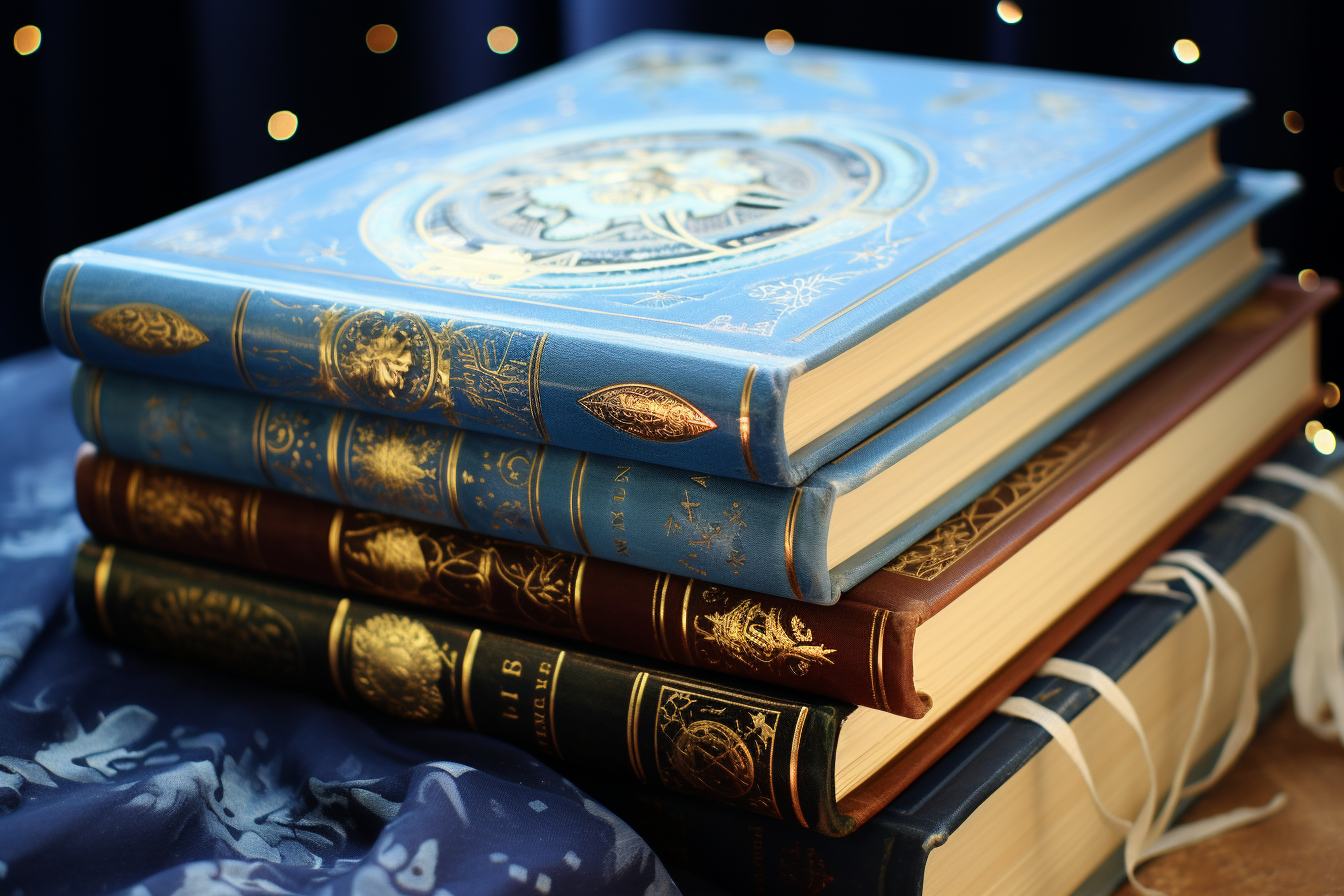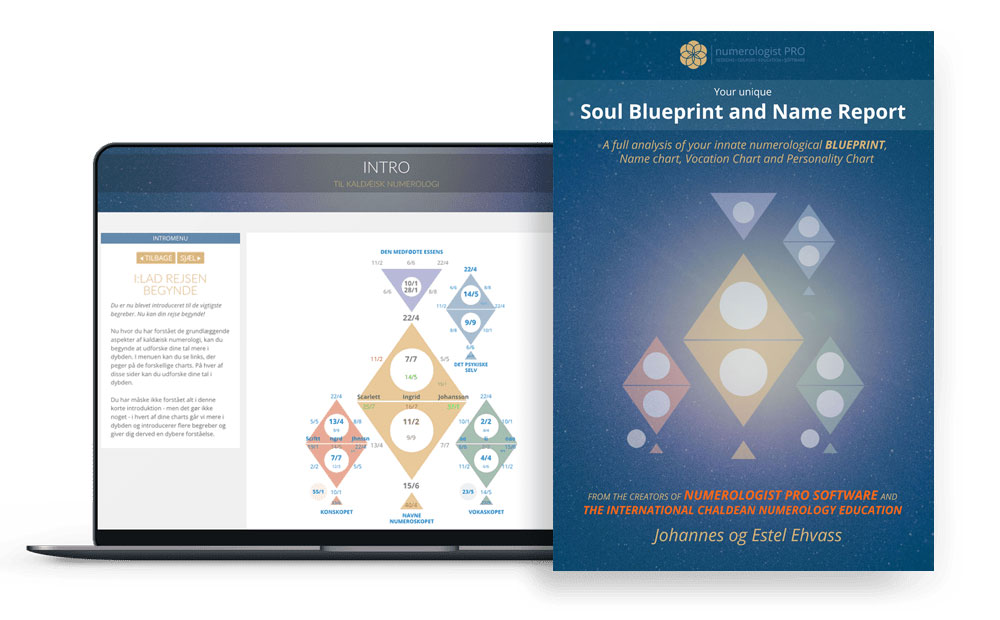Renaissance Texts and Authors: Continuation of a Tradition

Estel Ehvass
Welcome, dear reader! The Renaissance marked a pivotal time for many disciplines, and astrology was no exception. As society rekindled its passion for the arts and sciences, so too did it revisit the stars. This era, renowned for its rebirth of knowledge, saw astrology intertwine with emerging scientific studies and the broader awakening of human curiosity. The cosmos, during this period, served not just as a guide for destinies, but also as a testament to humanity's relentless pursuit of understanding. Dive with me into this intriguing era, where stars and society found renewed harmony.
Reviving and Revising Ancient Works
Introduction

The Renaissance, often described as a ‘rebirth’ of art and culture, also marked a significant era for astrology. Central to this revival was the return to ancient astrological texts, translating and interpreting them for the contemporary audience. This exploration led not just to a deeper appreciation of ancient wisdom but also to modifications that reflected the dynamic ethos of the Renaissance.
The Context: Rediscovery and Renaissance
Reclaiming Lost Knowledge
With the fall of Constantinople in 1453, many Greek scholars fled to Italy, bringing with them invaluable manuscripts. This migration catalyzed the Renaissance revival, offering Western Europe previously inaccessible works, including astrological treatises.
Resurgence of Greek and Roman Ideas
The Renaissance was, at its core, a movement inspired by classical antiquity. Scholars feverishly sought after Greek and Roman texts, driven by a belief that they held a purer, more profound knowledge than the medieval manuscripts.
Astrology in Antiquity: A Quick Overview
Role of Astrology in Ancient Cultures
Both the Greeks and Romans viewed astrology as a bridge between humanity and the divine. It played a role in everything from agriculture and medicine to politics and personal life. While the Greeks provided a theoretical foundation, the Romans popularized and incorporated it into daily life.
Key Ancient Texts
Several treatises stood out in their influence:
– **Tetrabiblos**: Often referred to as the ‘Bible of Astrology,’ this work by Claudius Ptolemy was a cornerstone text, detailing the principles of horoscopic astrology.
– **Astronomica**: Written by the Roman poet Manilius, this was a blend of astrology and poetry, reflecting on the philosophical implications of the stars.
Revival and Reinterpretation
Translations and Commentaries
The immediate task was to translate these ancient works from Greek and Latin into the vernacular. However, it wasn’t just a direct translation; scholars often added their commentaries, elucidating, elaborating, or even critiquing the original content.
Integration with Renaissance Humanism
Humanism, the heartbeat of the Renaissance, emphasized individual experience and reason. As astrological texts were revisited, there was an attempt to reconcile these ancient beliefs with the humanist approach, leading to a more personalized interpretation of astrological charts.
Revising and Adapting: The Renaissance Spin
Critical Engagement with the Past
While there was immense respect for antiquity, Renaissance scholars didn’t shy away from critique. They recognized that certain aspects of ancient astrology needed revisiting, either because of advancements in astronomy or due to shifts in theological and philosophical paradigms.
The Emergence of Elective Astrology
Ancient astrology was heavily deterministic. However, influenced by humanist beliefs, Renaissance astrologers expanded on elective astrology — the art of choosing the most astrologically auspicious time for an action. This allowed individuals to harness celestial forces, reflecting the Renaissance emphasis on individual agency.
Conclusion
Reviving and revising ancient astrological texts was not just an academic exercise for Renaissance scholars. It was a profound journey, bridging the past and the present, the celestial and the individual. In their pursuit of ancient wisdom, these scholars ensured that astrology remained a living, evolving discipline, adapting to the spirit and needs of the times.
Prolific Astrological Authors of the Period and Their Contributions
Introduction
The Renaissance, a period of rebirth and rediscovery, produced not only renowned artists and thinkers but also a series of influential astrologers. These astrologers, through their prolific works, not only revisited ancient traditions but also innovated, adding depth and dimension to the field. Let’s journey through the lives and contributions of these remarkable figures.
The Landscape of Renaissance Astrology
The Confluence of Cultures
Astrology in the Renaissance was enriched by the meeting of different traditions. The Greek and Roman texts, Islamic influences from the Arabic world, and emerging European insights combined to create a vibrant tapestry of astrological thought.
The Demand for Astrological Knowledge
Renaissance society, from the elite to commoners, thirsted for astrological guidance. This demand paved the way for astrologers to produce a wide range of works, from detailed treatises to almanacs for the general populace.
Key Astrologers and Their Pioneering Works
Johannes Kepler (1571–1630)
Kepler, primarily known for his astronomical contributions, was also a practicing astrologer. His work sought to refine and reform astrology, bringing it in line with his heliocentric views. His significant work, **”Harmonices Mundi”**, discussed the ‘harmony of the world’, drawing parallels between planetary motions and musical harmony.
Girolamo Cardano (1501–1576)
A polymath, Cardano’s interests spanned from mathematics to medicine. However, his contributions to astrology remain invaluable. His work **”Libelli Quinque”** delved deep into horary astrology, a method of making predictions based on the time a question is asked, showcasing its relevance in decision-making.
Lucas Gauricus (1476–1558)
Serving as a papal astrologer, Gauricus was one of the most influential figures of his time. His series of prognostications and natal charts for European nobility, including **”Tractatus Astrologicus”**, established him as a leading figure in the realm of Renaissance astrology.
Nostradamus (1503–1566)
Perhaps the most famous astrologer of the Renaissance, Nostradamus is best known for his work, **”Les Prophéties”**, a collection of quatrains predicting future events. While often cryptic, his writings have been subject to numerous interpretations and remain a topic of fascination.
The Influence of These Astrologers
Reviving and Refining Techniques
The Renaissance astrologers were not just content with preserving ancient knowledge. They actively sought to refine techniques, ensuring that astrology was both a reflection of the past and an adaptable tool for the present.
Fusing Science and Spirituality
Astrologers like Kepler exemplified the Renaissance spirit, merging scientific observations with spiritual interpretations. This fusion allowed astrology to maintain its relevance, even as astronomical discoveries challenged traditional views.
Personalizing Predictions
With a shift towards individualism, these astrologers began to craft more personalized predictions, moving away from generic forecasts. This tailored approach increased the appeal and applicability of astrological insights.
Conclusion
The astrologers of the Renaissance were not mere passive recipients of ancient knowledge. They were active participants in the ongoing dialogue between the past and present, between tradition and innovation. Through their writings, they not only enriched the field of astrology but also left an indelible mark on the intellectual landscape of the era.
Printed Astrological Texts: The Impact of the Printing Press
Introduction
In the landscape of technological advancements, the invention of the printing press by Johannes Gutenberg in the mid-15th century stands as a monumental shift. The world of astrology, like many other disciplines, found its voice amplified and its reach extended. This chapter delves into the transformative influence of the printing press on astrological texts and how it changed the dissemination and consumption of astrological knowledge.
The Birth of Mass Production
The Gutenberg Revolution
Before Gutenberg’s invention, books, including astrological manuscripts, were hand-copied by scribes, a process that was time-consuming and expensive. The Gutenberg press, with its movable type, changed the very fabric of book production. It made the mass production of books feasible, lowering costs, and democratizing information access.
Shift from Manuscript to Print
The move from manuscript to print meant that astrological knowledge was no longer the exclusive preserve of the elite or the monastic communities. Texts previously rare and inaccessible began to flood the European markets, making astrology more popular and widespread.
Impact on Astrological Texts
Standardization of Knowledge
Printed texts provided a level of standardization previously unseen. This had significant implications for astrology, as standardized texts meant standardized practices, techniques, and interpretations. Errors in hand-copied manuscripts got corrected, and a consistent body of knowledge emerged.
Increased Accessibility
Astrological books, once the privilege of the affluent, became accessible to a broader audience, including the burgeoning middle class. This democratization meant that more people could learn and practice astrology, leading to its increased popularity.
Visual Representations
The printing press allowed for better illustrations and diagrams. Astrological charts, which were intricate and often challenging to reproduce by hand, could now be printed with precision. This visual enhancement added depth to astrological texts, making them more engaging and easier to understand.
A New Wave of Astrological Publications
Astrological Almanacs and Pamphlets
The demand for astrological knowledge led to the rise of almanacs – annual publications containing forecasts, calendars, and other pertinent information. Often sold at fairs and in town squares, these became essential reading for many. Similarly, pamphlets discussing specific astrological events or predictions became popular, given their affordability and topical nature.
Translations and Commentaries
The printing press facilitated the translation of ancient astrological texts from Greek, Latin, and Arabic into vernacular languages. This opened up a treasure trove of knowledge. Furthermore, scholars began to write commentaries on these texts, bridging ancient wisdom with contemporary thought.
Collaborative Works
The ease of publication meant that collaborative works, where multiple astrologers contributed, became feasible. These compilations provided a holistic view, merging different astrological traditions and interpretations.
The Societal Implications
Astrology in Education
With printed textbooks, astrology found its way into formal education. Universities across Europe began offering courses on the subject, leading to its academic legitimization.
Critics and Skeptics
While the printing press amplified the voice of astrologers, it also gave a platform to skeptics and critics. Debates around astrology’s validity, previously limited to academic circles, became public discourse.
The Synthesis of Astrology and Renaissance Humanism
Printed astrological texts often mirrored the broader Renaissance ethos, intertwining humanist thought with astrological insights. This synthesis reflected in texts that combined poetry, philosophy, and astrology, showcasing the interdisciplinary spirit of the era.
Conclusion
The marriage between the printing press and astrology during the Renaissance was a pivotal one. It transformed astrology from an esoteric art to a widely consumed science, shaping its trajectory for centuries to come. As printed pages carried astrological wisdom across Europe, they echoed the Renaissance spirit of inquiry, discovery, and democratization of knowledge.

Johannes & Estel: Renowned authorities in Numerology, Astrology, and the esoteric arts. As the founders of Scandinavia's premier Numerology school, we're delighted to share our insights through this curated series on astrology. Dive in and discover the stars.
The Worlds Most Advanced Numerology Report

Your birthdate reveals your unique life purpose, potentials, talents, weaknesses, and karma in this life.
Your names show what you attract into your life regarding your career, relationships, happiness, money, and success.
GET THE REPORT HERE
Introduction to Astrology
The history of Astrology
Moving beyond deterministic astrology
Foundation of Astrology: Planets, Signs and Houses
Astrology and the Holographic Universe
The Holographic Universe
The Human Psyche as a Mirror to The Solar System
The Human Body as a Mirror to The Star Signs
Astrology Background
Egyptian Astrology
Mayan Astrology
Chinese Astrology
Indian Astrology - Jyotish
Celtic Astrology
Tibetan Astrology
Mesopotamian Astrology
Early Mesopotamian Astrology: The Dawn of Celestial Divination
Enuma Anu Enlil: The Epicenter of Babylonian Celestial Omen Interpretation
Babylonian and Chaldean Astrology
Babylonian and Chaldean Astrology
Chaldean influence and evolution
Chaldean Wisdom: Safeguarding and Transmitting Astrological Knowledge
Hellenistic Astrology
Hellenistic Astrology background
Claudius Ptolemy and Tetrabiblos
Vettius Valens
Dorotheus of Sidon
Persian Astrology
Persian Astrology background
Sassanian Astrology
Late Antiquity and The Transition Period
Late Antiquity and The Transition Period
Hellenistic to Islamic Transition: The Torchbearers of Astrological Wisdom
Islamic Golden Age
Arabian Astrology Background
Arabian Astrology Contributions
Medieval Astrology
Introduction: The Medieval Cosmos
Monastic Preservers: Astrological Knowledge in the Dark Ages
Astrology in Medieval Medicine
Kings, Queens, and Constellations: Astrology in the Medieval Court
The Church and the Stars: A Contentious Relationship
Universities and Scholastic Pursuits: Academic Astrology
Astronomy & Astrology: Tools of the Trade
Medieval Astrological Houses and the Synthesis of Traditions
Transition to the Renaissance: Humanism and the Celestial Arts
Reflections: Medieval Astrology's Echoes in Modern Practice
Astrological Art of the Middle Ages
Famous Medieval Astrologers
Medieval Astrological Texts
Renaissance Astrology
Renaissance Humanism and Astrology
Scientific Advancements and Astrology
The Social Fabric: Astrology in Everyday Renaissance Life
Court Astrologers of the Renaissance
Controversies and Conflicts: Astrology Under Scrutiny
Renaissance Texts and Authors: Continuation of a Tradition
Astrology and Art: Celestial Imagery in the Renaissance
Renaissance Astrological Practices: Evolutions and Innovations
End of the Renaissance: The Gradual Decline of Astrological Influence
Renaissance Astrology's Echo in the Modern World
Enlightenment Astrology
Introduction: The Enlightenment and Astrology
Challenging the Stars: Astrology's Critics during the Enlightenment
Astrology and the New World
Astrology in the 19th Century
The Dawn of Psychological Astrology
Astrology in the 20th Century: A Modern Renaissance
Astrological Associations and Schools
Modern Controversies and Astrology
Astrology and Popular Culture
Astrology and Technology
Current Trends and Future Directions in Astrology
Conclusion: Reflecting on Astrology's Evolution
The Planet Significances
The Sun in Astrology
The Moon in Astrology
Mercury in Astrology
Venus in Astrology
Mars in Astrology
Jupiter in Astrology
Saturn in Astrology
Uranus in Astrology
Neptune in Astrology
Pluto in Astrology
Chiron in Astrology
Black Moon Lilith in Astrology
Pars Fortuna in Astrology
Ceres in Astrology
Houses in Astrology
Introduction to Astrological Houses
The Angular Houses
The Succedent Houses
The Cadent Houses
The 1st House
The 2nd House
The 3rd House
The 4th House
The 5th House
The 6th House
The 7th House
The 8th House
The 9th House
The 10th House
The 11th House
The 12th House
Interaction Between Houses
Derived Houses, House Rulers, and Interceptions
Conclusion: Synthesizing House Knowledge
All Materials © 2023 & 2024 Numerologist PRO
Terms of Service: Information provided by Numerologist PRO and/or from this web site is not intended as advice (medical, psychological, financial or other), nor is it intended to replace your work with a qualified professional (medical or otherwise). You should maintain your relationship with your providers and consider the services of this site as informational only. Any information, stories, examples, or testimonials presented on this website do not constitute a warranty, guarantee, or prediction regarding the outcome of an individual. This web site is a sharing of knowledge and information of numerology/energy work based on the experiences of Numerologist PRO. You are encouraged to make your own decisions based on your own research and inner guidance. By booking and receiving services, you agree to fully release and hold harmless Numerologist PRO and all it's affiliated numerologists from and against any liability or claim that may arise out of or in connection with their service(s).
Numerologist PRO © 2021

CONTACT
numerologist@numerologistpro.com
LIKE US, and get free numerology tools, info about your personal numbers, best business dates of the year - and more!
YOUR FREE NUMEROSCOPE CHART
Enter your name and email below and get access to our free online numerology chart tool.